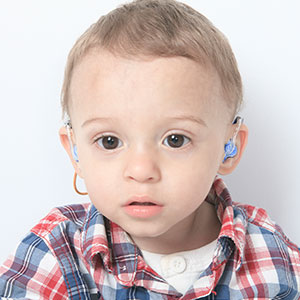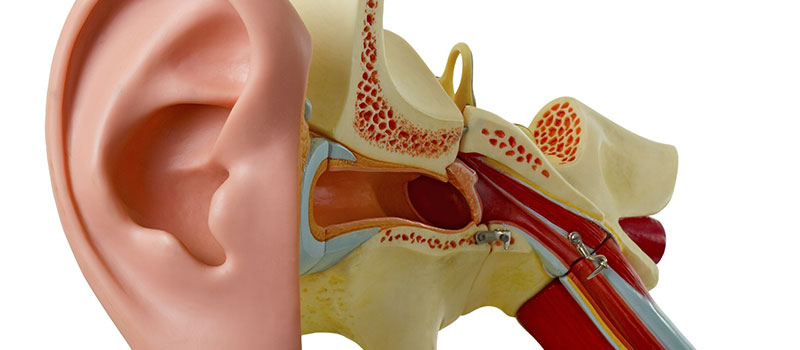If you have raised children, you have experienced what it is like when a little suffers from an ear infection (acute otitis media). They are almost a rite of passage for children: by the age of five, nearly every child has experienced at least one episode. It can stem from a bacterial or a viral infection in the middle ear, the air-filled space behind the eardrum containing the tiny vibrating bones of the ear. Much of the pain comes from the inflammation and buildup of fluids. Children are more likely than adults to get ear aches.
PediatricENT of OKC wants to make sure you are aware of the likelihood your child might come down with such an infection, but also what you can do about it with our help.
Quite often ear infections clear up on their own. First treatment might involve managing pain while monitoring the condition. Cases with infants and more severe cases in general may require antibiotic medications. Long-term problems related to these infections, whether persistent fluids in the middle ear or persistent or frequent infections, can cause hearing loss and other serious complications.
 What Are Ear Tubes?
What Are Ear Tubes?
Ear tubes are cylinders placed through the eardrum (tympanic membrane) so that air can be admitted into the middle ear. Tubes consist of various materials and come in two basic types: short-term and long-term. Short-term tubes a smaller and generally stay in place for six to eighteen months before falling out on their own. Long-term tubes are larger and have flanges that secure them in place for a longer time-frame. Sometimes the long-term tubes fall out on their own, but often an otolaryngologist will have to remove them.
Who Needs these Tubes and Why?
Each year more than half a million children receive tubes in their eardrum; it is the most common childhood surgery performed with anesthesia. The average child age is between one and three years old.
Primary reasons for inserting ear tubes include:
- Reduce the risk of future iinfection;
- Restore hearing loss caused by middle ear fluid;
- Improve speech problems and balance problems;
- Improve behavior and sleep problems caused by chronic infections;
- Help children do their best in school.
Tubes help when a child experiences repeated middle ear inflammation, or has hearing loss caused by persistent middle ear fluid (effusion). Other less common conditions might also warrant tubes, such as malformation of the eardrum or the eustachian tube, Down Syndrome, cleft palate or injury to the middle ear caused by a reduction of air pressure due to flying or scuba diving (the latter cause not common with infants, of course).
How Does the Surgeon Insert the Tubes?
PediatricENT of OKC offers the best available care for ensuring the procedure of inserting tubes into your child’s eardrum goes quickly and effectively with the least possible pain or risk.
The procedure is called a myringotomy, referring to an incision in the eardrum, done with a surgical microscope with a small scalpel on an outpatient basis. In other words, the child does not need a hospital stay. Without a tube, the hole would heal and close within a few days. The tube keeps the hold open, thus allowing air to reach and ventilate the middle ear space.
Most young children will need general anesthesia, which can still involve a brief office procedure. Older children may be able to tolerate the procedure without anesthetic. After performing the myringotomy, the doctor will suction out the fluid in the middle ear space behind the eardrum, and then place the tube in the opening. Ear drops may be administered afterward and prescribed for a few days. The whole procedure lasts around fifteen minutes and the patient recovers quickly.
Sometimes the otolaryngologist will recommend removal of the adenoid tissue (lymph tissue located in the upper airway behind the nose) when tubes are placed for persistent middle-ear fluid. This is effective for children four years or older and is often considered when a repeat tube insertion is necessary. Current research indicates that removing adenoid tissue concurrent with placement of tubes in the eardrum for persistent middle-ear fluid can reduce the risk of recurrent infections and the need for repeat surgery in children four years and older.
What Happens after Surgery?
Afterwards the patient will remain in a recovery room for monitoring, assuming general anesthesia was used, and can normally go home within an hour or two. The child usually experiences little or no pain, but may be groggy, someone irritable and possibly suffer nausea. Without anesthesia recovery is immediate.
Hearing loss caused by fluid in the middle ear goes away immediately after surgery. If the child has speech, language, learning or balance problem, it may take several weeks to improve. The doctor may perform an audiogram following the procedure if there was hearing loss prior to tube placement.
The tube opening is small (about 1/20th of an inch) and water will not normally get into the ears from swimming or bathing, and earplugs or similar devices remain unnecessary unless the doctor advises them.
Parent should consult with an otolaryngologist (ear, nose, and throat specialist) if your child has experienced repeated or severe infections, ear aches that are not resolved with antibiotics, hearing loss due to fluid in the middle ear, barotrauma, or have an anatomic abnormality that inhibits drainage of the middle ear.
Possible Complications
Any medical procedure could potentially bring complications. Myringotomy with ear tube insertion is a common and quite safe procedure with minimal complications. When they do occur, they may include:
- Perforation: This can rarely happen when a tube comes out or a long-term tube is removed and the hole in the tympanic membrane (ear drum) does not close. The hole can be patched through a procedure called a tympanoplasty or myringoplasty.
- Scarring: Any irritation of the ear drum (recurrent infections), including repeated insertion of tubes into the eardrum, can cause scarring called tympanosclerosis or myringosclerosis. In most cases, this causes no problem with hearing and does not need any treatment.
- Infection: Ear aches can still occur with a tube in place and cause ear discharge or drainage. However, these infections are usually infrequent, do not cause hearing loss (because the infection drains out), and may go away on their own or be treated effectively with antibiotic ear drops. Oral antibiotics are rarely needed.
- Tubes in the eardrum might come out too early or stay in too long: If an ear tube expels from the eardrum too soon (which is unpredictable), fluid may return and repeat surgery may be needed. Tubes that remain too long may result in perforation or may require removal by an otolaryngologist.
Clearly, the advantages to the child’s health and future development more than offset the minor risks shown above, all of which a doctor can easily handle. Especially in the case of repeated ear infections, insertion of a tube in the eardrum is the best way to restore the child to good health. PediatricENT of OKC stands ready to answer any questions and help you ensure the continued wellness of your child.

